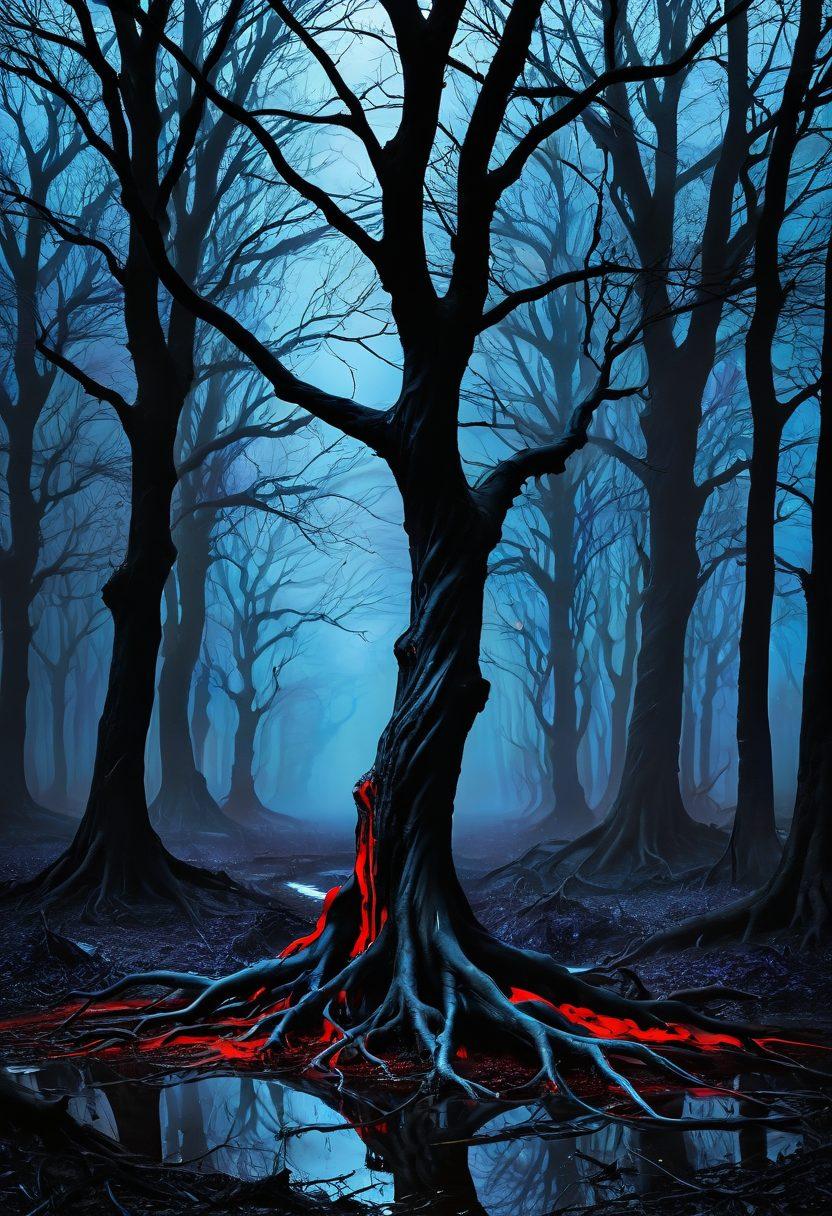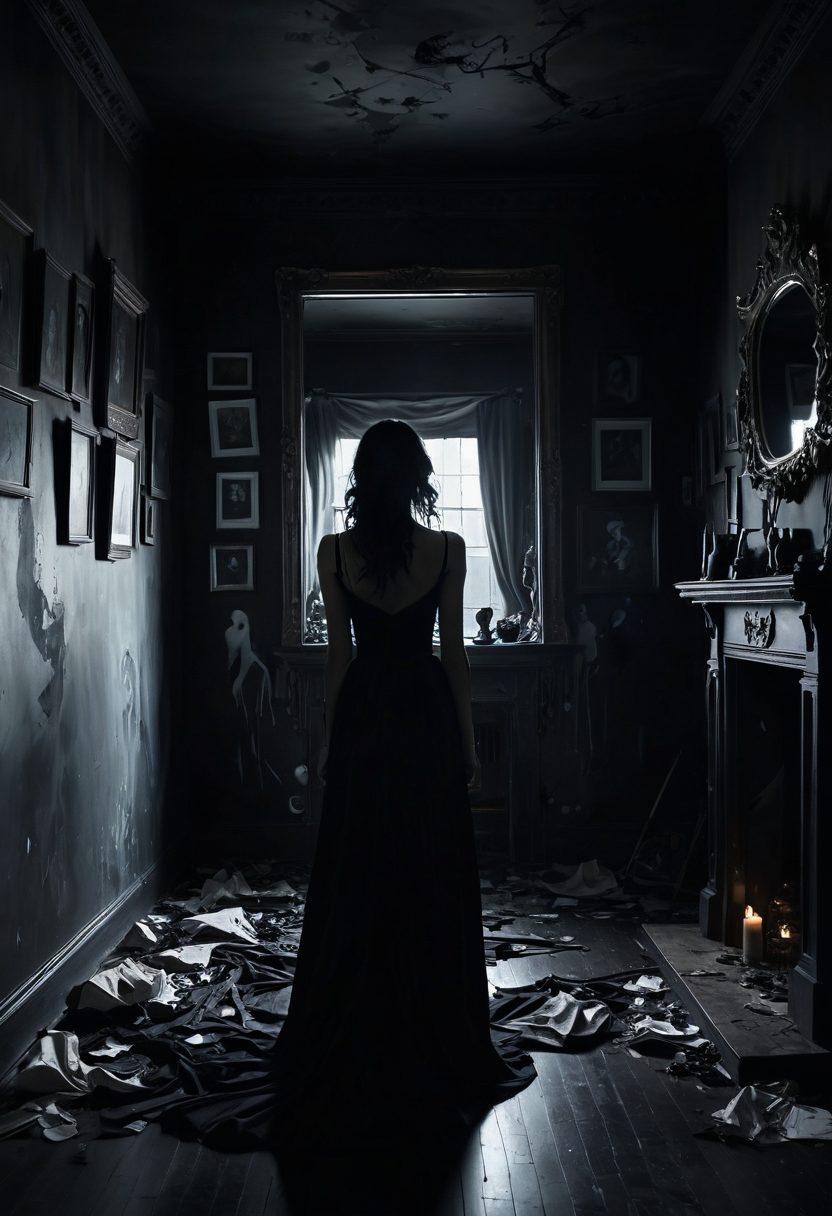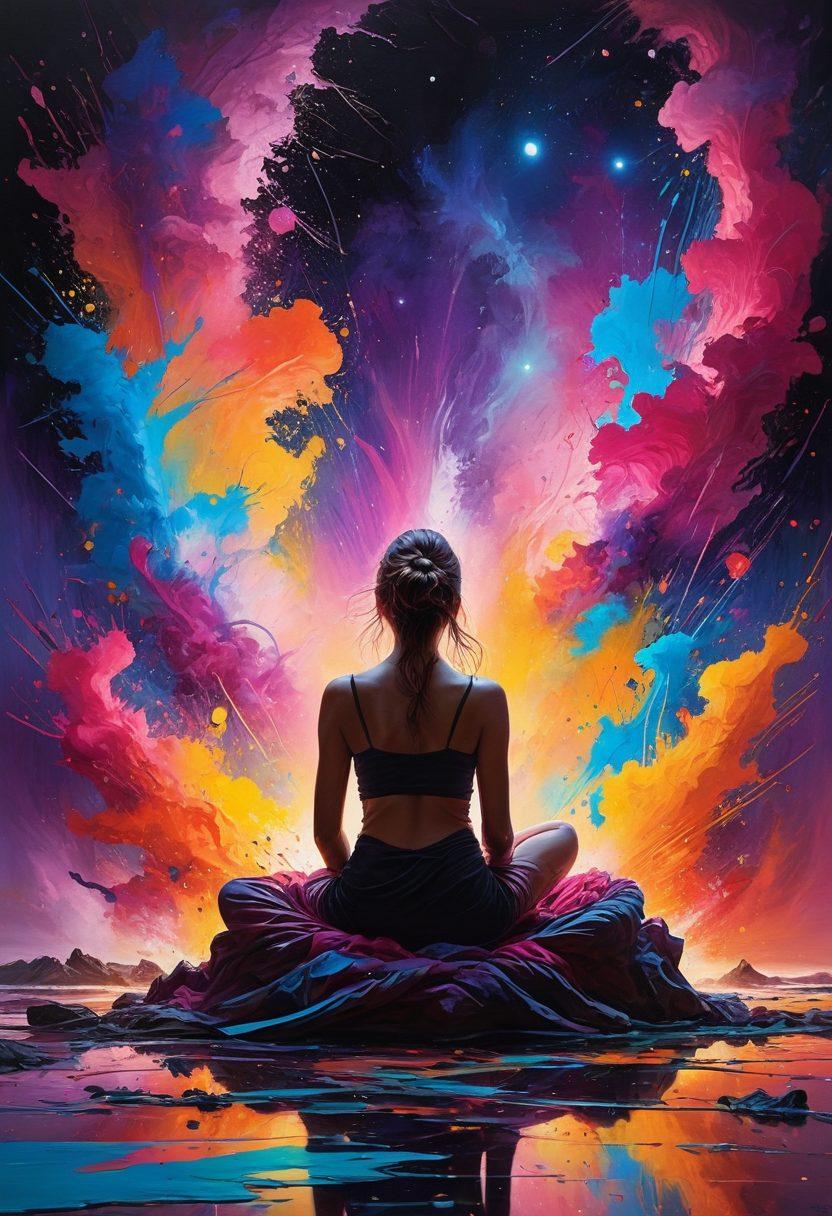Exploring the Beauty of Pain: Emotive and Surrealist Expressions in Dark Art
Pain, torment, and suffering are often viewed as the harshest experiences of life, yet they can also be the catalysts for some of the most profound artistic innovation in history. Embracing torment, artists throughout the ages have transformed their darkest moments into striking emotive artwork that provokes thought and stirs the soul. Consider the famous quote by Vincent Van Gogh, who once said, "I put my heart and my soul into my work, and have lost my mind in the process." This duality of pain and creativity is fascinating, providing insight into how individuals can forge beauty from the ashes of their emotional turmoil. Are we not all on a journey to express our inner chaos in a way that captivates and evokes empathy in others?
The notion of torment artistry reaches deep into the psyche of both the artist and the viewer. Take a moment to think about the emotional resonance of a piece of graphic art that evokes both admiration and discomfort. How does one balance the fine line between creating painful expression and joyful creation? For many, it's a journey paved with splashes of creativity driven by raw emotions—pushing the boundaries of art through dark aesthetics and surrealist art. Artists embrace their struggles, translating their experiences into imaginative expression that speaks volumes. Are we witnessing a renaissance in embracing pain as a form of artistic currency?
As we delve deeper into the world of artistic torment, it becomes apparent that a myriad of styles capture the essence of suffering and beauty. Sentimental art, with its subtler tones, contrasts beautifully against macabre art, which dives bravely into graphic representations of anguish. The term abstract torture art may evoke unsettling imagery, yet think of how it provokes a visceral response—a questioning of reality and an exploration of the subconscious. This disturbing creativity asks us to confront our own fears while reminding us that beauty often lies in the shadows. What if true artistic expression lies in the ability to display discomfort, showcasing vulnerability and resilience?
In the realm of gothic art, we see how emotion-driven art invites us to explore our darker selves. Its dreamlike visuals play with the mind's eye, inviting the viewer into a world where haunting beauty reigns supreme. This moment of contemplation inspires us to find personal meaning, nudging us to ask ourselves: how can our unique experiences of pain serve as a foundation for creativity? Artists exemplify this through visionary dark art, revealing that confronting our struggles can lead to profound beauty, reminding us that we all have the ability to transform suffering into emotive artwork that connects us in ways we never thought possible.
Ultimately, the artistic journey from pain to profound beauty challenges us to explore our emotional landscapes. While disturbing creativity may seem like an oxymoron, it is this contradiction that fuels fantastic horror art, offering a rich tapestry of human experience. Embracing creative pain can lead to catharsis, not only for the artist but for those engaging with the work. As you reflect on your own experiences of torment, consider how they have shaped your perception of beauty. Could the act of creating something that encapsulates your struggles be the path to healing? The world is filled with stories waiting to be told, and through the lens of artistic torment, we can discover our shared humanity.
The Dark Side of Creativity: How Pain Fuels Surrealistic Aesthetics
Pain is often seen as an unwelcome visitor in our lives, something to be avoided at all costs. But what if embracing that pain could unlock new channels of creativity? In the world of dark art, the interplay between torment and artistry leads to some of the most compelling emotive artwork that we encounter. The question then arises, how can pain fuel surrealistic aesthetics? In this exploration of the dark side of creativity, we delve into how our struggles can translate into imaginative expression that captivates and enchants, while also leaving us with lingering feelings of discomfort.
Throughout history, artists have harnessed their personal pain to create remarkable works that resonate with many. Think of Vincent van Gogh, whose turbulent inner world fueled works that are now celebrated for their emotional depth. His swirling skies and vibrant colors evoke a sense of both chaos and beauty, representing that fine line between joy and sorrow. This essence is captured in what we might call 'graphic art'—an intersection of the visceral and abstract. As you look at a piece of macabre art, can you feel the artist's struggle? Does it ignite something in you?
In the realm of dark aesthetics, the term 'emotional pain' recalls various reactions. Some may recoil from it; others are drawn closer, sensing the relatable truth buried within its layers. 'Creative pain' is the heartbeat of artistic innovation, enabling artists to transform their anguish into something that speaks to universal experiences. This phenomenon is prevalent in gothic art, where figures lurk within dreamlike visuals and stories steeped in fantasy. What do you think drives an artist to use emotion-driven art to portray disturbing creativity rather than a serene and joyful creation?
Imagine standing before a piece of surrealist art that distills feelings of abstract torture. The colors, the composition, the sheer intensity of it all, do they make you confront your own fears? Or perhaps they invite you to understand what lies beneath the surface of existence. Fantastic horror art, laden with layers of complexity, dares to delve into the depths of human psyche and often unveils the dark corners of our own thoughts. By questioning our relationship with pain and torment, we start to appreciate how these themes contribute to the broader narrative within visionary dark art.
As aspiring artists seeking to create transformative works, should we fear our pain? The truth lies in understanding that through embracing our shadows, we can cultivate a more profound, relatable artistry. Emotional struggles can become the brush strokes that color the canvas of life, ultimately leading to profound and evocative expressions. So the next time you feel that spark of discomfort, ask yourself: could this be the seed of a new piece of emotive artwork? Let your imagination soar; perhaps pain is not just a burden but rather a pathway to the incredible, as we continue our quest to understand the beauty of pain in art and life.
Visionary Expressions: Crafting Emotion-Driven Art from Disturbing Themes
Art has always been a mirror reflecting the human experience, and sometimes that reflection can be twisted, raw, and unsettling. Enter the world of 'emotion-driven art,' a realm where artists daringly confront their inner turmoils and transform deep-seated pain into evocative visuals. Pain is often viewed as a burden, but what if we could reshape it into something beautiful? As we explore visionary expressions in dark art, we unravel how torment artistry meets artistic innovation, leading to pieces that resonate on profound levels. Is it possible that within suffering lies the seed of creation?
One cannot think about dark aesthetics without acknowledging the powerful pull of emotive artwork. For many artists, themes of pain and torment serve as a foundation for creating poignant beauty. Take the example of surrealist art, where 'dreamlike visuals' often dance with unsettling concepts. Every brushstroke carries the weight of a painful expression, revealing the artists’ struggles and their journey through shadows. As Viktor Frankl said, ‘When we are no longer able to change a situation, we are challenged to change ourselves.’ Through their graphic art, artists invite viewers to witness their transformative process, encouraging us to embrace our own discomfort and channel it into 'creative pain.'
The juxtaposition of 'joyful creation' and dark themes extends the conversation further. Have you ever noticed how gothic art can elicit joy through its haunting imagery? Creeping shadows and macabre art can evoke a sense of wonder and intrigue. Quite paradoxical, isn't it? Through their visionary dark art, artists urge us to confront our fears and explore our psyche. They teach us that pain and beauty are not mutually exclusive; rather, they often coexist in a dance that gives birth to fantastic horror art. Imagine walking through a gallery filled with abstract torture art that captures the essence of struggle and liberation. The narratives told through these pieces are not merely disturbing; they’re deeply relatable, reflecting our collective journey.
But this subversion of pain into emotional dynamism isn’t just for the tidy confines of galleries—it bleeds into our daily lives. Every time we channel our experiences—be it heartbreak, grief, or torment—into artistic expression, we embark on a journey of healing. Emotional turmoil, when transmuted into imaginative expression, acts as a cathartic release. Think about the last time you felt overwhelmed by something painful. Can you recall moments where you turned that pain into poetry, a painting, or even a song? It speaks to the universal truth that creativity often springs from distress, showcasing the artistry in our human condition.
So how do we weave this concept into our own creative endeavors? The answer lies in embracing what we typically shy away from. Artists who fearlessly explore dark themes show us that vulnerability can lead to remarkable insights. By nurturing our 'disturbing creativity' and leaning into artistic torment, we open ourselves up to new realms of expressive potential. Let’s be honest, the world often teaches us to hide our scars, but as we delve into dark aesthetics, we glimpse the beauty that can arise from the harshest experiences. All forms of expression—be it emotive artwork or ethereal gothic art—offer a chance to dive deep into our psyche and emerge with powerful narratives to share.


